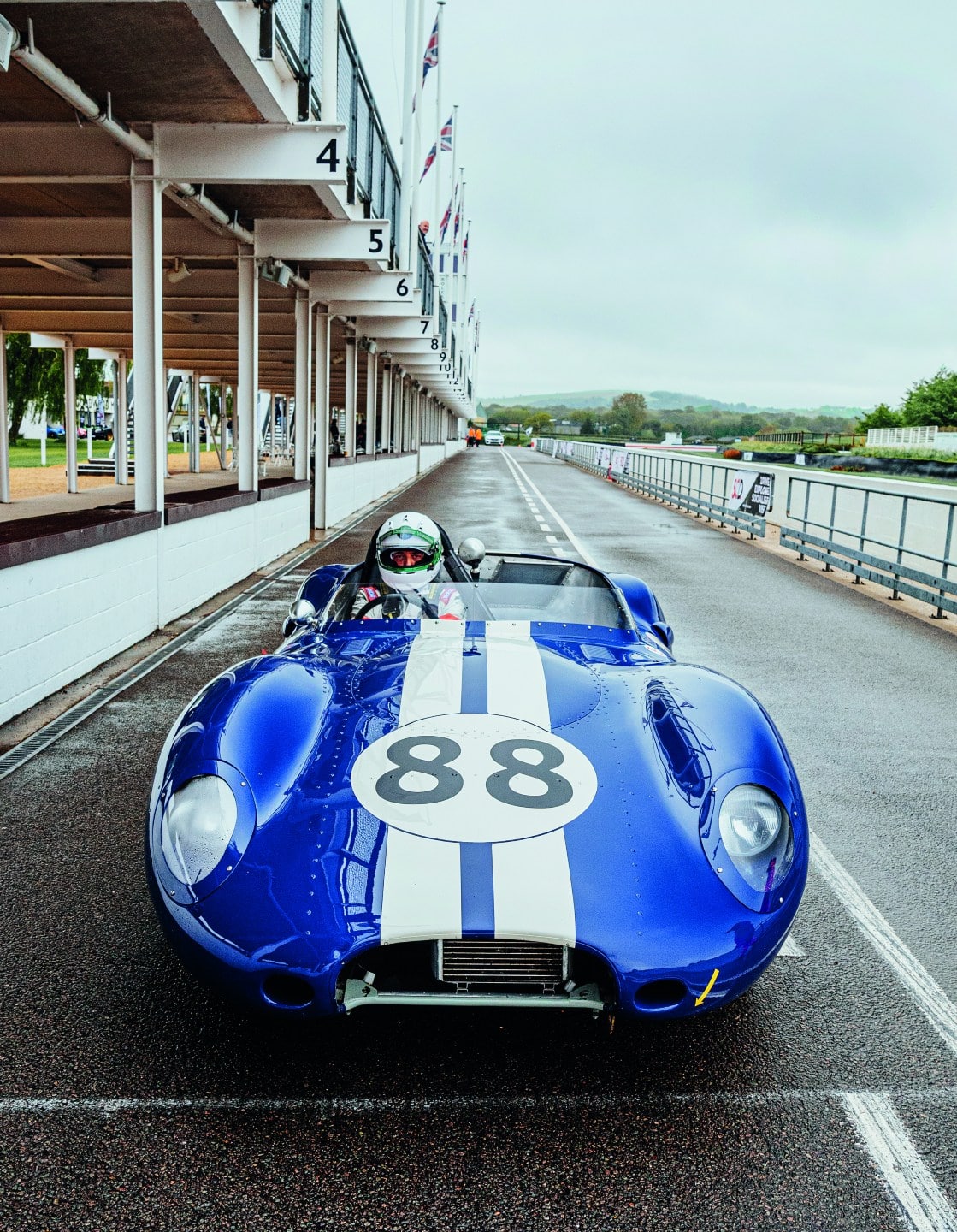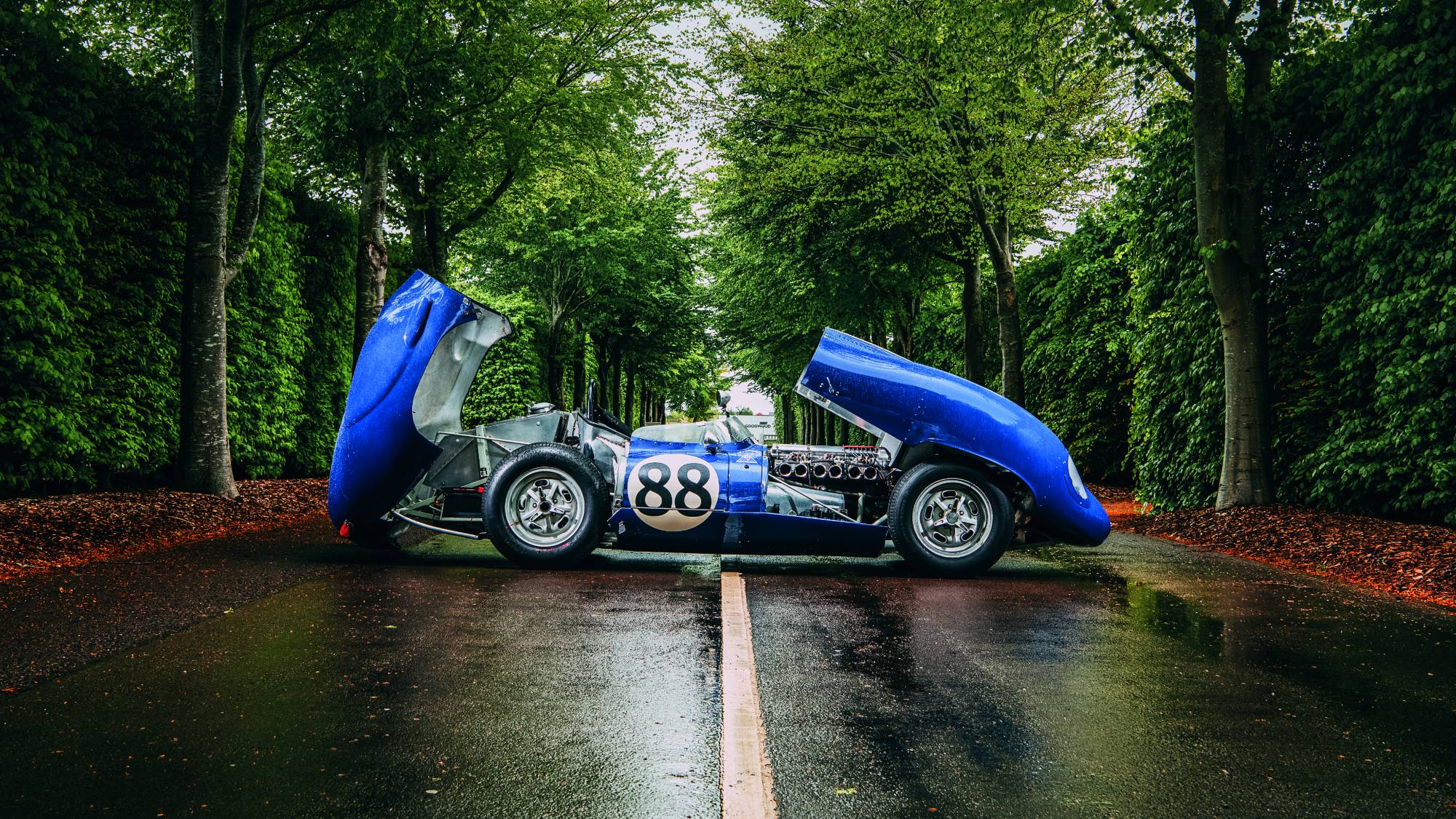The last production Lister Costin — a smooth operator that's pure animal
Chassis BHL135 was the 14th and final Lister Costin and ultimately marked the end of the line for the Cambridge company. Andrew Frankel takes to the wet of Goodwood to test this 1959 ‘animal’ – a car that is now in need of a new owner
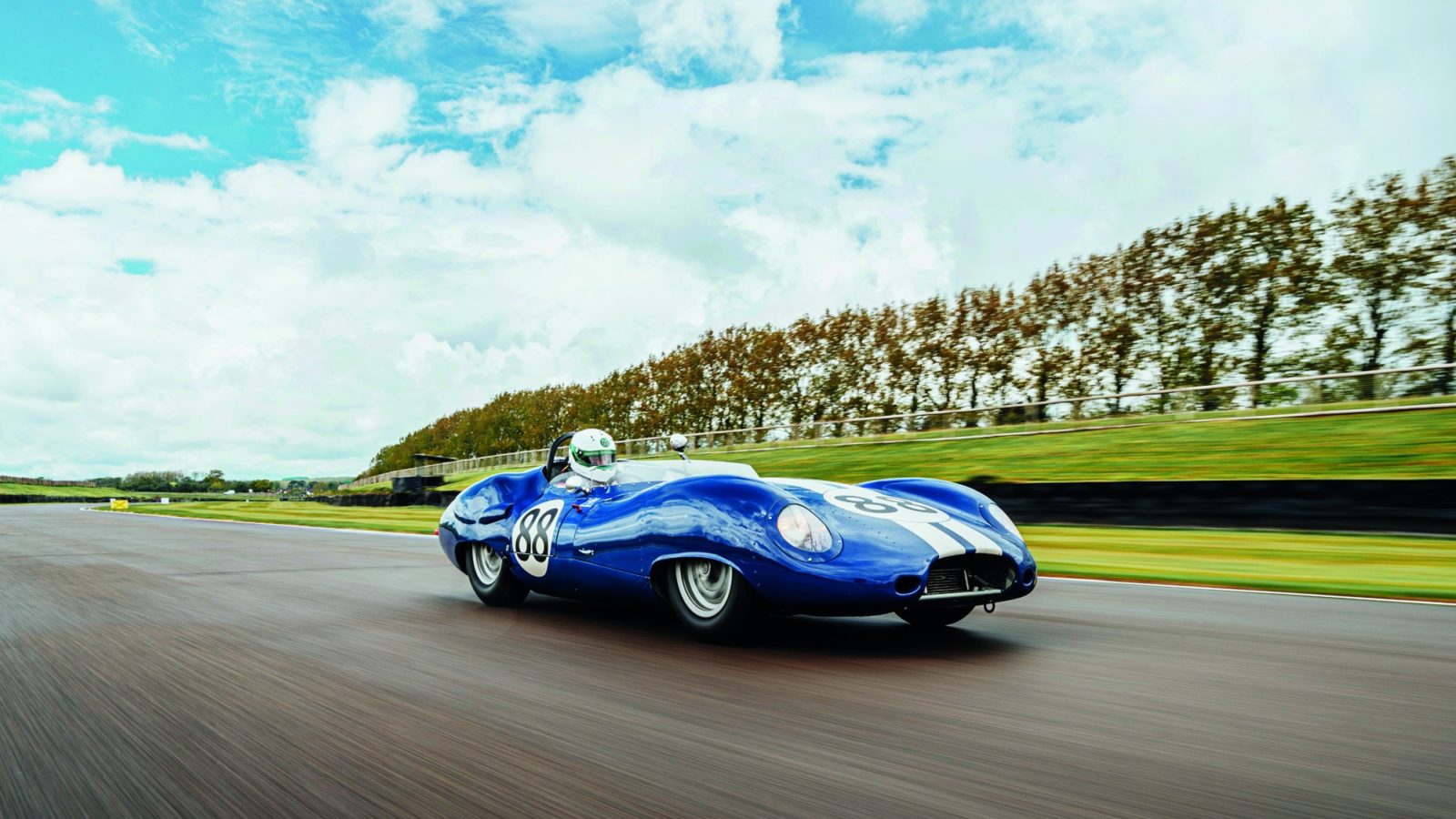
Jayson Fong
There is a hoary old tale, almost certainly apocryphal, of a party being held with Brian Lister as its guest of honour. And the organisers naturally arranged for as many Listers as possible to attend. When the time came for speeches, Brian stood up and said something like, “I am so happy to see that of the x number of cars we built, y have honoured me with their attendance today.” The point being that ‘y’ was a considerably larger number than ‘x’.
It is a sad sign of the times that pretty much the first question that anyone asks in connection with those wonderful and usually Jaguar- or Chevrolet-powered sports cars of the 1950s is ‘Is it a real one?’ It is an important question, because so many are not. So let’s clear that up straight away: this is a real one. Not only that, it is the very last Lister to have been built and delivered before Brian Lister shut the shop for good in August 1959.
All that remained was the one-off spaceframe car that had taken so much effort and money and remained in bits at the time. It was sold off and eventually completed, and while it saw little success racing in the early 1960s, as an historic racer it has become a staple (and now winner) of the Goodwood TT. It is a car I used to race and is very close to my heart.
But it is also another story for another time. This Lister is chassis BHL135 (standing for Brian Horace Lister), which, according to Doug Nye’s renowned 1980 book Powered by Jaguar, is the 14th and final production Costin-bodied Lister built in 1959, following the 17 production ‘Knobbly’ Listers produced during 1958. There is no BHL136.
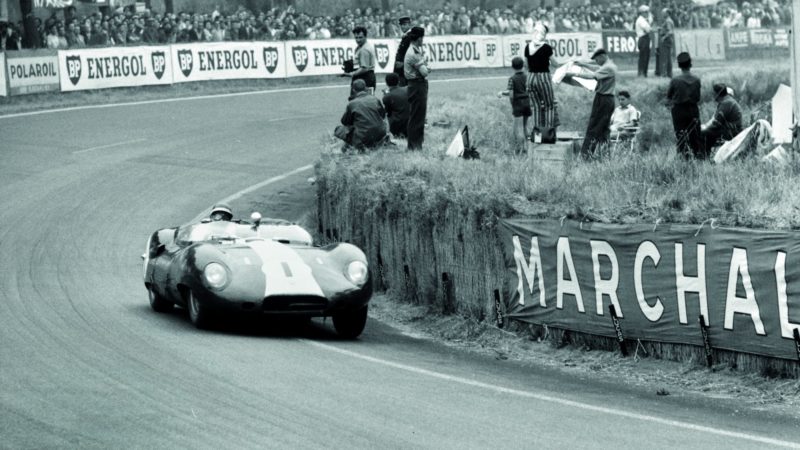
The works Lister Costin driven by Ivor Bueb and Bruce Halford lasted nine hours at Le Mans in 1959
Revs Institute
Little of its early history is known but it appears to have been shipped to the US when new, with engine mounts suitably modified to accept Maserati’s thunderous 4.5-litre V8 engine used in the contemporaneous 450S. Subsequent modifications to the bonnet suggest someone then decided to take a more orthodox and pragmatic, if somewhat less courageous, approach and fit it with a small-block Chevy V8, which actually powered more Costin Listers than Jaguar straight sixes did. Whether the Maserati engine was ever fitted is not known.
It seems very possible that the car was never raced in the US, not least because if it had been, it is likely that some evidence of the fact would have come to light over the last 60-plus years. Such evidence that does exist points in an entirely different direction. For it seems the bonnet was modified again with its front wheel arches cut away, perhaps meaning that the owner wanted to use the car on the road and needed to address the issue of its absolutely atrocious steering lock.
But the most compelling evidence provided by that bonnet that indicated the car went unraced is provided by its very existence. Bell Sport & Classic, which is selling the car and brought it to Goodwood for me to try, says, “This is probably the only Costin [Lister] to retain its original bonnet,” from which it is reasonable to infer its survival was down to it having led a very quiet life, well away from the rough and tumble of racing.
Which would also explain why this is such an original Lister, documentation from CKL Developments verifying the originality not only of that bonnet (which is not on the car but will be sold with it), but more importantly its chassis, which is stamped where you’d expect and in the original Lister font.
Perhaps most telling however is the welding, which has its own unique signature style, namely that of Bob Gawthrop who did all the welding on the original production Listers. The doors and sills are original too, as is much of the suspension.
It was brought back from the US in 1987 where it was restored to former glory by John and Gary Pearson, and fitted with Jaguar power which it retains to this day. Prepared by Pearsons and raced ever since, it has a claim to being the fastest Lister of them all, most recently winning the Sussex Trophy at the 2019 Goodwood Revival and again at Portimão later that year where Chris Ward lapped a second faster than he’d managed in any other Lister.
“It was a bridge to a spaceframe future for the company that never turned up”
But how did the Costin even come about in 1959? It seems through a certain insecurity on behalf of Brian Lister. Not content with creating a garagista British sports car every bit as quick in the right hands (usually those of Archie Scott Brown) as the factory works cars of Aston Martin and Jaguar, he felt the chassis and aero could have been done better if realised by an expert eye.
This was in part to offset the inconvenient fact that there wasn’t much he could do about the power source, which was always going to come from proprietary suppliers, overwhelmingly Jaguar and Chevrolet. But he was mindful too of the fact that work had started on the chassis at the end of 1953 and that by the end of the decade the world, bluntly, had moved on.
What he envisaged was a spaceframe car, lighter by far yet structurally stiffer than the rather two-dimensional meat and potatoes design of chunky cross-braced longitudinal tubes he’d worked with ever since. So he asked Frank Costin to take on the job. Costin had impressed Lister not just with his work on Vanwalls, which would help the young Formula 1 team to take the inaugural constructors’ trophy in 1958, but also his earlier work sculpting the fabulous shapes of the Lotus 11 and 16. During the war Costin had also worked for de Havilland on projects like the Mosquito fighter-bomber.
Brian was acutely aware that he’d done the Knobbly by eye and without training, so bringing someone of Costin’s repute to tackle the new project would have seemed eminently sensible at the time. Whether it actually turned out that way is another matter altogether.
What in fact happened was that the spaceframe car soon turned into a design and development nightmare, not to mention something of a money pit. With no chance of it being ready for the 1959 season, Costin was invited to adapt at least his aerodynamic thinking to the Knobbly chassis to create what was effectively a stop-gap car, a bridge to a spaceframe future for the company that, in the event, never turned up.
The direction Costin took was to make the car as slippery as possible, which is why the body is so long, smooth and encompassing. It also had a tonneau that was meant to be inflated by the airflow at speed, smoothing further the top surface of the car in theory, but in reality rather better at depriving its driver of all cooling air.
When done the Costin Lister probably did have lower drag, but only at the price of increased frontal area and I’ve never seen any statistical evidence to show that, overall in a like-for-like comparison, it was actually any quicker than the car it was designed to replace. Certainly Brian Lister was no fan, quoted in Paul Skilleter’s Lister-Jaguar book as saying: “Frank, not to put too unkind a comment on it, effed it up. It was bloody terrible to be honest with you.” Which, even given its undoubted design flaws, still seems a trifle harsh.
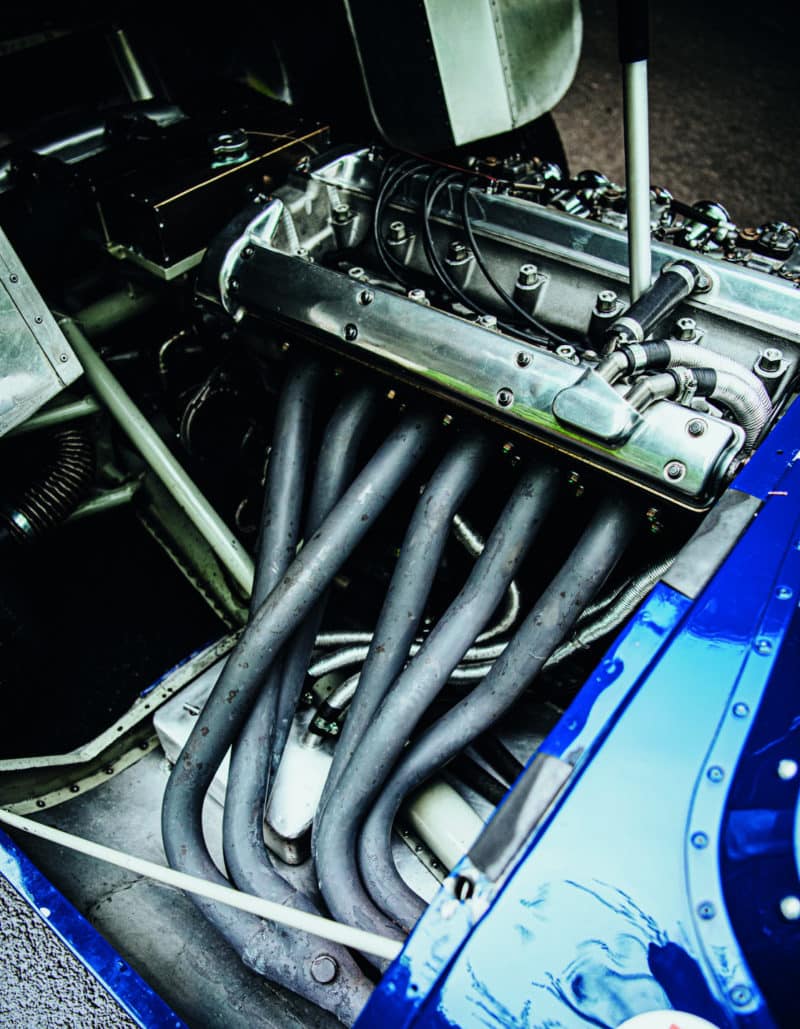
The car may once have been fitted with a Chevrolet V8 but now runs with a Jaguar 3.8-litre race engine
Jayson Fong
But then it is perhaps instructive to look briefly into the likely mindset of the man at the time of the Costin’s creation. Still grieving from the terrible loss of his friend and protégé Scott Brown at the wheel of one of his cars at Spa in 1958, Brian Lister had already lost his passion for racing. Contributing to this was the fact that new rules meant his cars had to run 3-litre Jaguar engines in international competition, which had a monotonous habit of unstitching themselves in the heat of battle. In addition, as it was becoming clear that the spaceframe car wasn’t going to turn up in time, the entire philosophy of racing powerful, relatively heavy cars was thrown into question at the 1959 British Grand Prix support race where his cars came in fourth, fifth and sixth, behind two tiny lightweight Lotus 15s and, ominously, amid-engined Cooper Monaco.
“The direction taken was to make the car as slippery as possible ”
Too much was being spent for increasingly little reward. No wonder that his view of the Costin was jaundiced. It culminated in an announcement on July 23, 1959 that Lister was withdrawing from racing, the last event likely to be the Goodwood TT on September 5. But then came a series of hammer blows: first Ivor Bueb, who’d been hired to replace Archie, was critically injured hillclimbing a Cooper on July 26. Then Jean Behra was killed in a Porsche at AVUS on August 1. Later that same day Brian learned that Ivor had succumbed to his injuries. Sickened to the core, he shut the race team down with immediate effect. The Costin Listers never did make it to Goodwood.
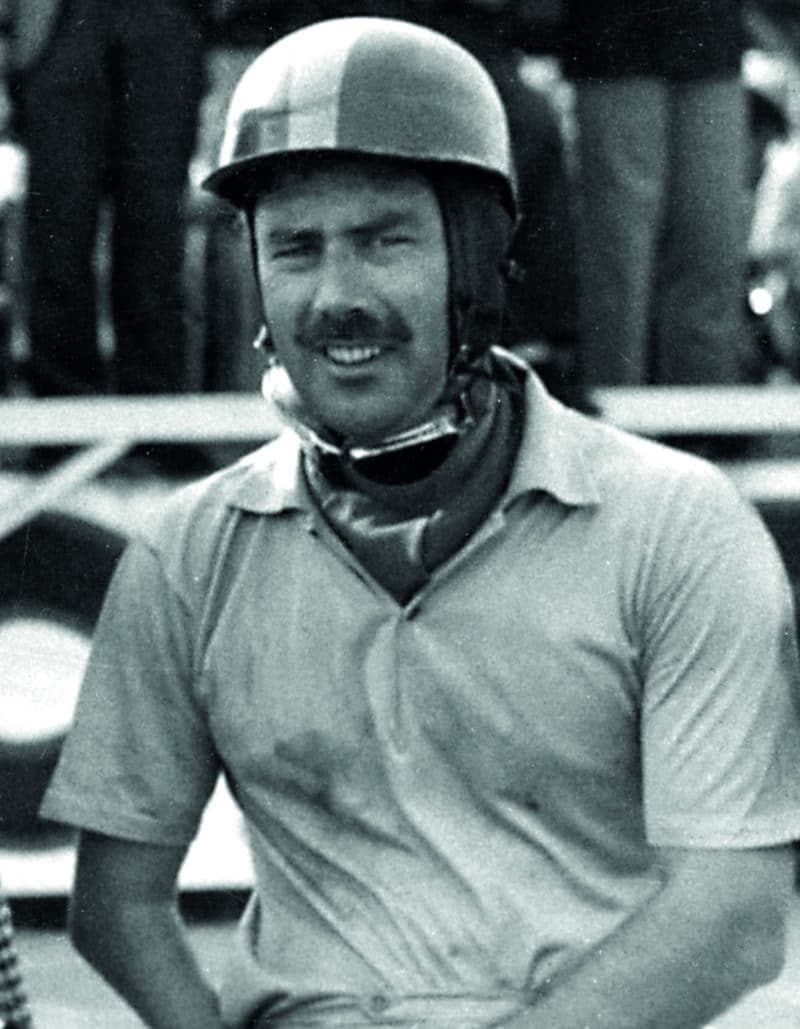
Archie Scott Brown died in 1958 racing a Lister at Spa
Getty Images
But there’s probably no better place to drive one today. Goodwood was always a happy hunting ground for Archie and Listers and both were an unmissable staple of racing there when the circuit was in its original pomp. They have been again ever since the first Revival meeting brought it back to life in 1998. Fast and flowing, it is ideal Lister turf.
Or at least it would be were it dry, which it most emphatically is not. We were attending a track day for supercar owners, most of whom quite sensibly elected to leave their precious steeds under their awnings, one of whom was even kind enough to question my sanity in choosing to drive such a beast in those conditions.
And a beast it undoubtedly is: I don’t know how much power this particular wide angle, 3.8-litre Jaguar is producing on its triple Weber DCO3 carburettors, but it will be between 350bhp and 400bhp, and considerably more than it had in period.
You step in over that little flip-down door and settle yourself what seems impossibly low in the car, even though Costins were criticised for having needless amounts of ground clearance. I expect modern race prep has reduced that over time. Certainly getting the driver as low in the car as possible was key to Brian’s original chassis design, if not Frank’s aerodynamic theory.
I love the dash because it almost doesn’t have one. It’s a plain sheet of aluminium with holes cut for a rev-counter, ammeter, water temperature and oil pressure gauges. Add a dash light, a key switch and some buttons, and you’re done.
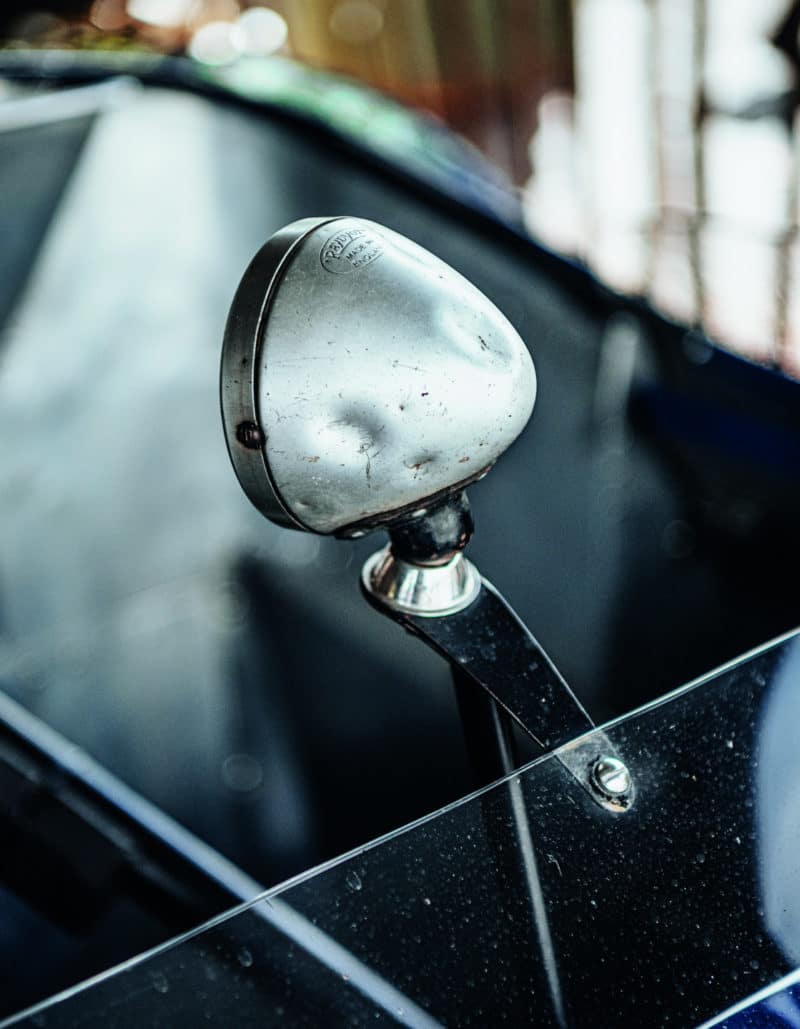
Well-worn Raydyot mirror
Jayson Fong
The boys from Bell Sport & Classic have already warmed it through for me and been kind enough to warn me about its fairly merciless race clutch, which I am about to discover is a problem compounded by a very high first gear.
The engine blasts into life. It’s been considerably silenced to sneak under Goodwood’s ‘noisy day’ regulations but it still sounds like it would be delighted to bite a chunk out of your throat.
“I love the dash because it almost doesn’t have one”
Sitting at the end of the pitlane waiting for the light to go green, I realise two things. First, like many a race motor tuned as far as it’s sensible to go, it does not care to idle. I have to sit there like an idiot making a racket at 2500rpm just to keep its plugs clean.
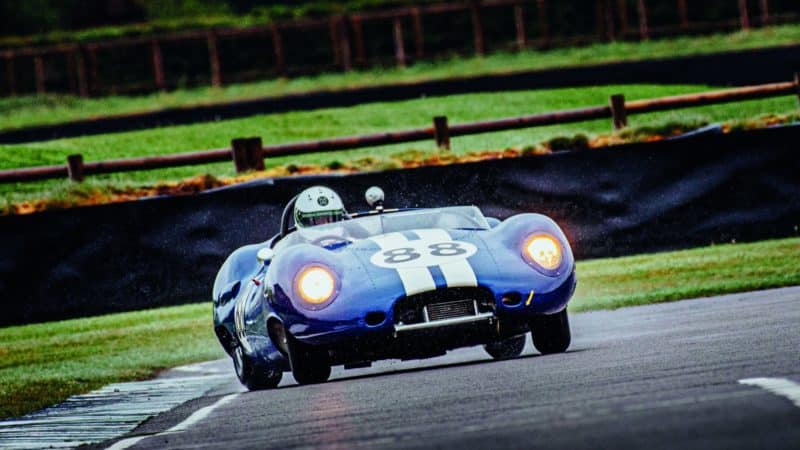
Jayson Fong
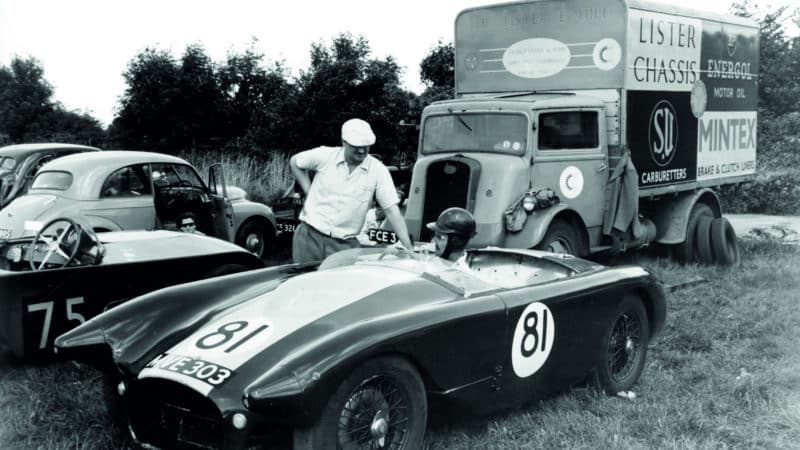
Brian Lister with Scott Brown in 1954; MVE 303 was the first Lister-Bristol
Getty Images
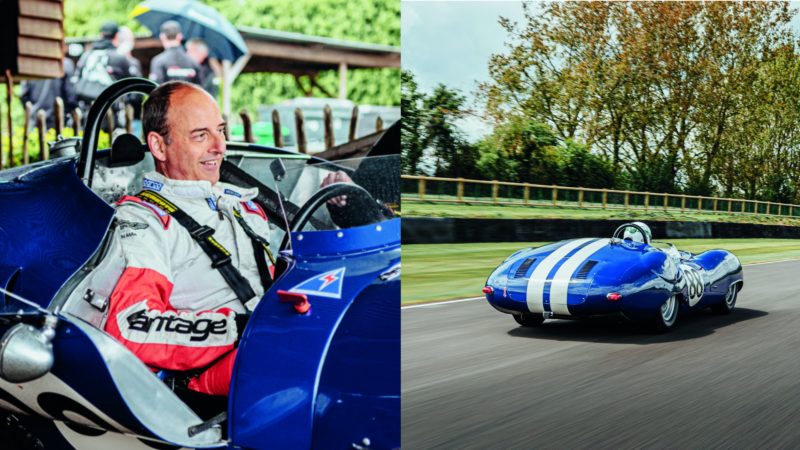
Jayson Fong
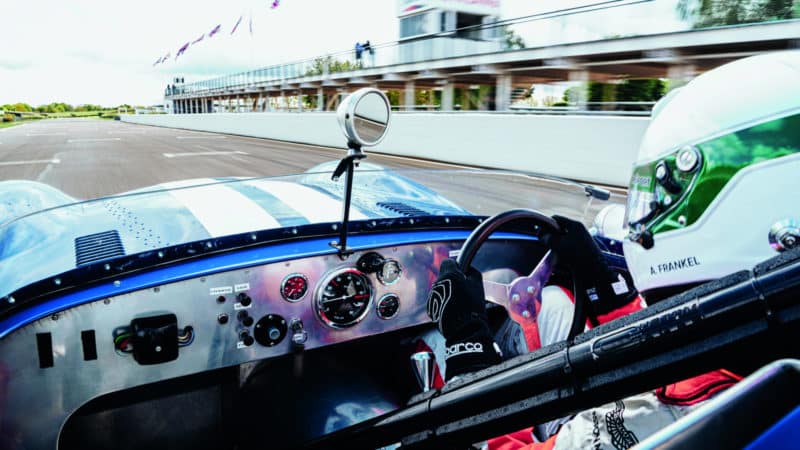
Since its return from the US in 1987, the car has raced throughout Europe
Jayson Fong
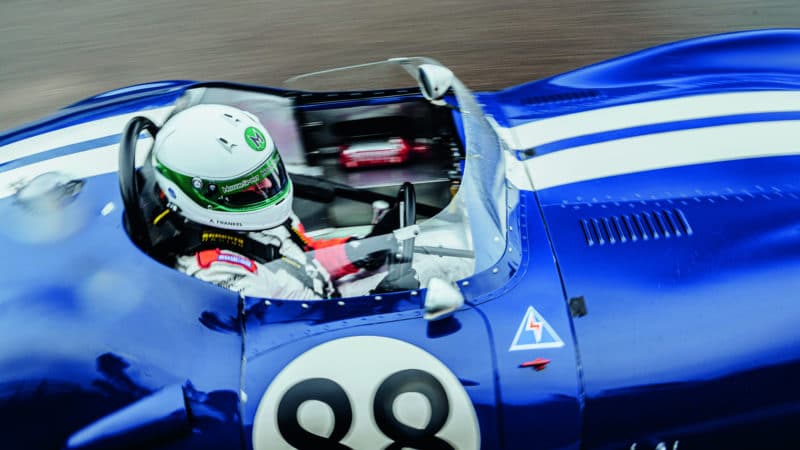
In 2019 at Portimão this Costin was driven by historic racer Chris Ward and went a full second quicker per lap than any Lister he’d raced before. Alas for our driver, the conditions were not fit for record-breaking
Jayson Fong
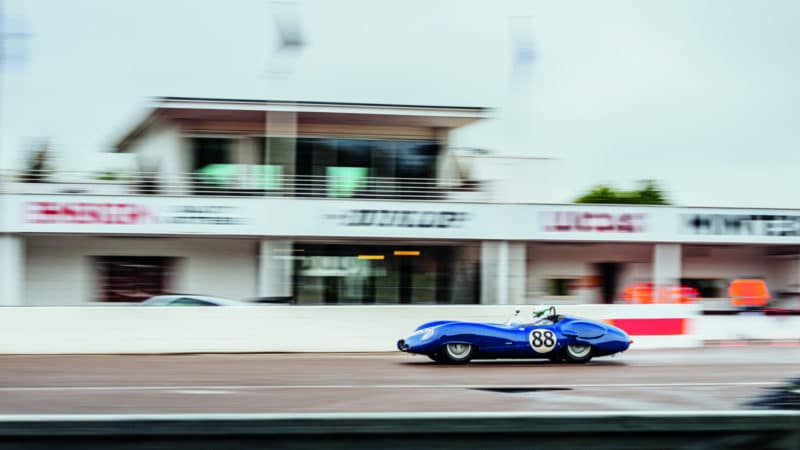
Jayson Fong
Second, I have no idea what set up the car is wearing, though given its now quite distant but still most recent activities, it’s a fair bet it’s full dry. I remember well how you could set the spaceframe coupé up beautifully for wet or dry conditions, but it was completely intolerant of being on the wrong settings so if it rained halfway through the race you were, in effect, stuffed. I can only hope this car with its more agricultural chassis is a little less sensitive.
I’m watching the rain plink off the Perspex screen when red turns to green and I am jerked from my reverie. A few more revs, drop the clutch, feel a bit of a goon for so much wheelspin (but it’s better than stalling) and I head out.
“Getting the driver low was key to Brian’s original chassis design”
Almost always you know whether today is going to be a riot or really hard work before you’re out of the first corner. And this was no different. You don’t need to be at maximum attack from the end of the blend line, just turn in gently to Madgwick, pick up the throttle and start squeezing. If it slides you’re in business, if it skids you’ve got trouble. The Lister slides. Beautifully.
Track conditions are probably at their second-easiest: properly wet so it’s completely consistent, but not so wet that those horrid rivulets of water are running across the track. So how much power can you use? It only has four gears and the first two have no chance of transferring the torque to the road. But if you’re gentle in third it picks up well enough. Traction is still limited, probably because it’s far too stiffly sprung for this weather, but it doesn’t skip or hunt about as you try to find how hard you can press and once the tyres bite, you’re away.
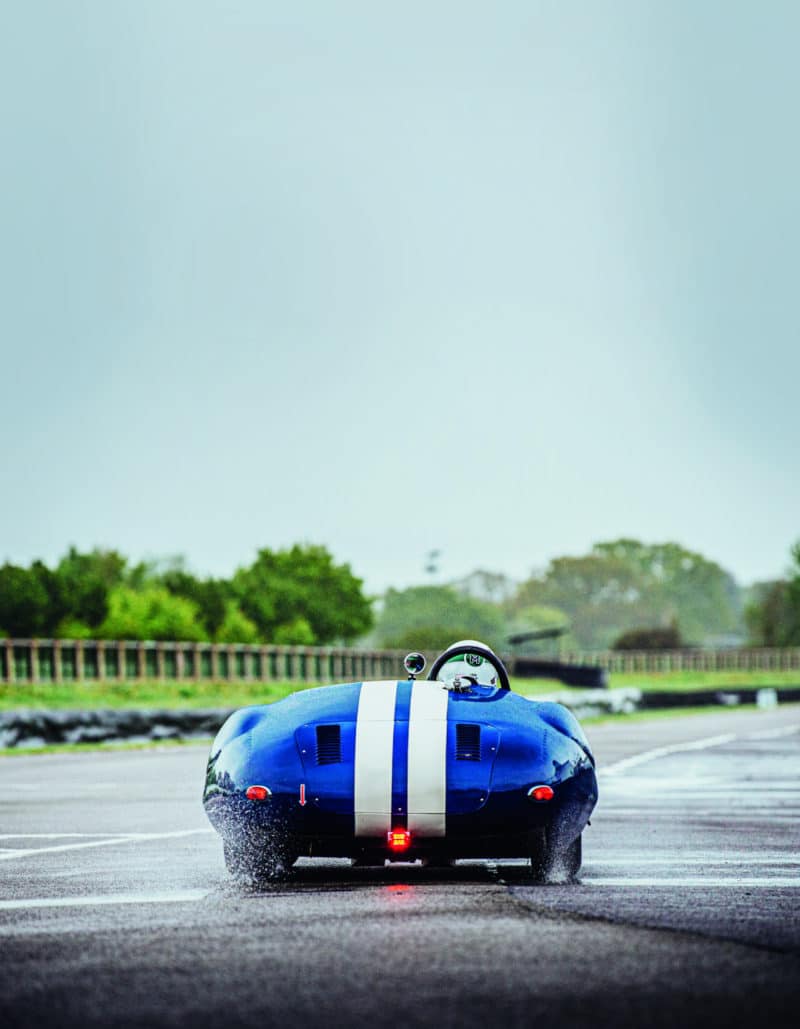
This Costin has been race prepared for more than 30 years by Pearson Engineering
Jayson Fong
Hooked up, this Lister is a pure animal. The engine is tractable enough but if you want to make the most from its top-end-heavy powerband and gear ratios, you need to use all 6500rpm, at which point in third gear the car is ripping the scenery towards you. Pull back that beautifully mechanical lever into top and the show scarcely abates. The car may be 62 years old, but it feels ready for anything.
“The car may be 62 years old, but it feels ready for anything”
And yet it’s not scary. I’d love to tell you about my heroics taming this feral creature, but if you’ve driven a bit you get to a stage when the only thing that frightens you in a car is when it does something you neither asked for nor expected. And the Lister never did. It flew through the quick curves nicely planted, it threw itself amiably sideways at the exit of the slow corners, and through the long medium-speed turns like Madgwick and Woodcote it would adopt whatever attitude you wanted. When I came in I felt I should have been wide-eyed, catatonic and drenched in sweat. In fact if I was wide-eyed it was really only because it had been so much easier than expected. I was laughing like a drain and moistened by rain alone.
This then is a brilliant machine, my only regret being I didn’t have a proper crack at it in the dry. It may not have been the car Brian Lister wanted it to be in 1959, but that’s a very different perspective to that we have today. In 2021 it stands as the ultimate example of the simple, sturdy, powerful open sports racing cars Britain did so well in the 1950s. Not just the other Listers and D-types, but the Jaguar-powered Coopers, Tojeiros and HWMs too. Of them all the Lister was the quickest, and the Costin the last. And this actual car is the last of the last, the final fling of a truly great, very important and much missed part of British motor racing history.
